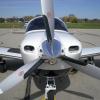Savvy Analysis ALERT
-
Members Online
- Coachella Bravo
- Julian Bangert
- skykrawler
- Raymond J1
- christaylor302
- MikeOH
- kevinw
- Bolter
- JaredDavis
- 802flyer
- Ragsf15e
- varlajo
- georgewdean1020
- hazek
- natdm
- Jim Peace
- hammdo
- Fritz1
- N201MKTurbo
- redbaron1982
- kortopates
- R Van Dyck
- avanti
- jwarren2
- Shadrach
- eyes_skyward
- Flyler
- FlyingDude
- Jake@BevanAviation
- WilliamR
- Anzaldi01
- Crawfish
- M20S Driver
- skydvrboy
- dzeleski
- Derrickearly
- Jerry 5TJ
- LANCECASPER
- IvanP
- 47U
- richardbrochu27
- Jbguns24
- GMBrown
- TCC
- eman1200
- warbingtonmasonry
- Griswold
- Hawth200
- EKoS


Recommended Posts
Join the conversation
You can post now and register later. If you have an account, sign in now to post with your account.